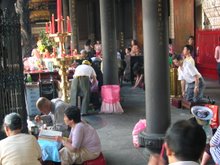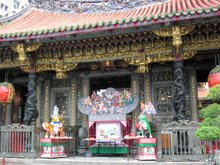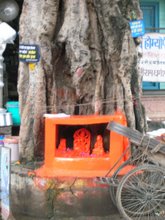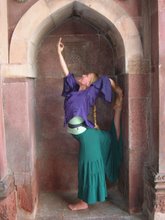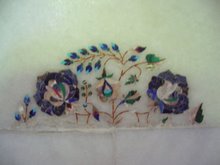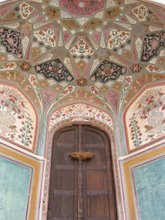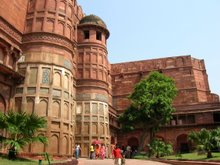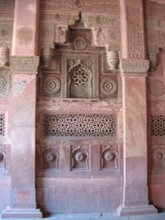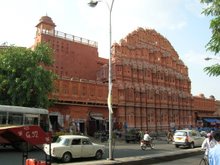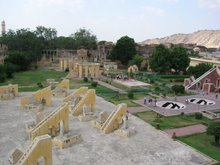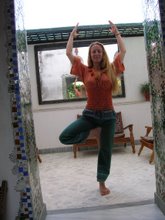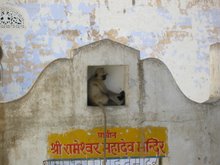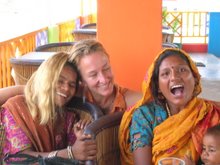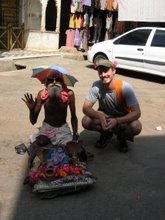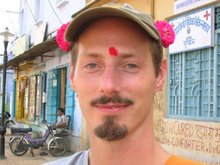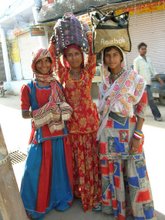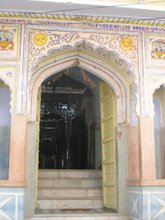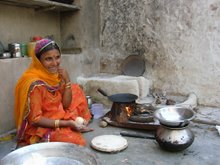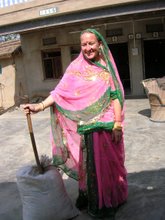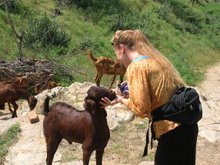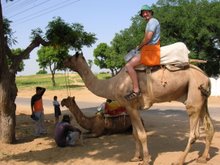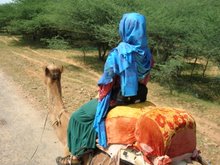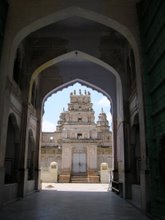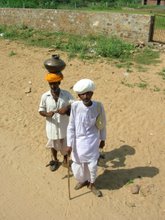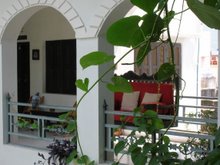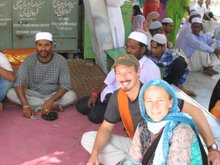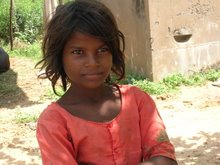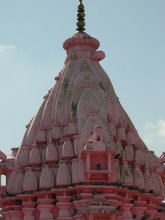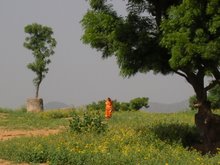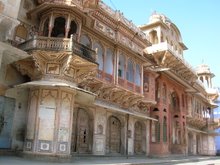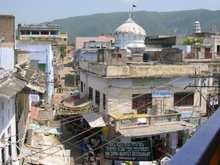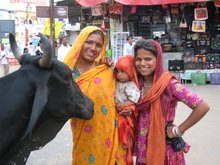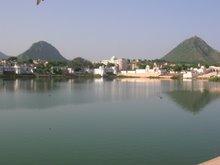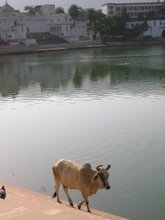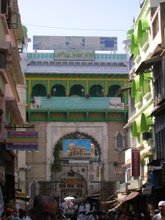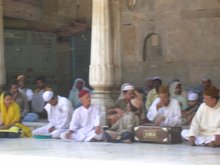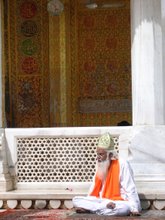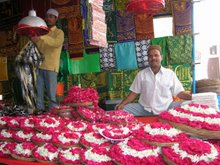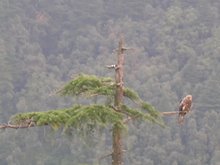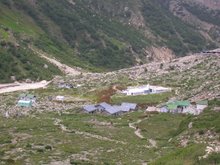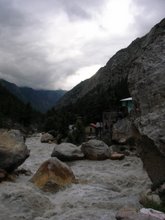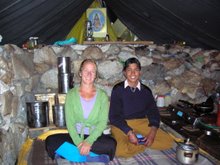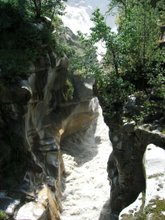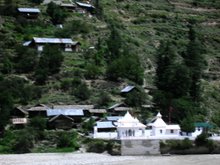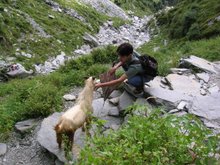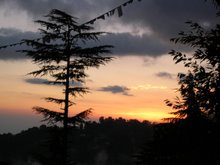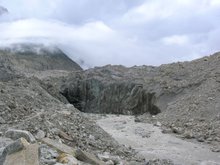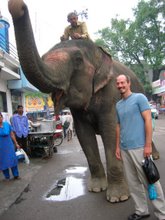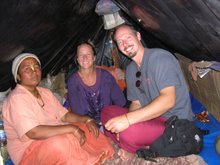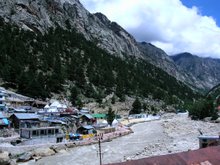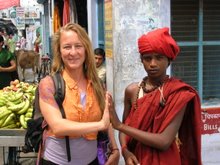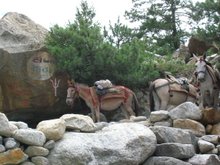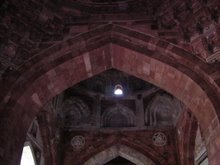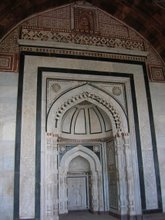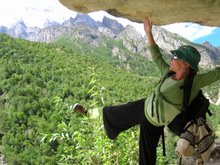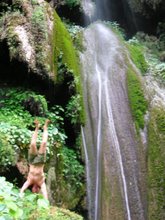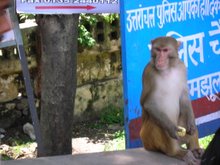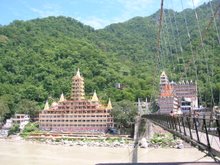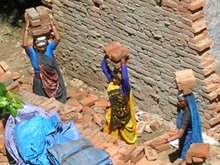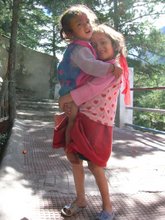Rajasthan is the land of fierce Sun, desert, camels, and the last remaining warrior culture (the Rajputs) of indigenous India to submit to British rule. In order to get the on Indian people's side the British Raj continued to ply the Maharajas (local lords of the land) with gifts and continued special authority over their provinces up until they left. Unfortunately, the spoils of increased favoritism with the British enable the Rajas to live even more frivolously and their people to fall further and further behind. At the date of India's Independence, only 6% of Rajasthani population was documented to be literate. During partition and Independence, Nehru had to convince the Rajasthani kings to join with India by allowing them to retain their special authority and spoils fortified by the acquiescence of the British, which had impoverished the Rajasthani people greatly. In 1975 Indira Gandhi called off the Rajas' privelege as feudal lords of the land In the 90's literacy went up to 60% and it has skyrocketed since then, which is a pretty interesting statement on what a region is capable of collectively, distanced from despotism! Shall we Americans take note?
Tom writes:
Hello all. Phoenix and I have been quietly spending the last few days in Pushkar, a small (about 15,000 people) town built around a small lake and surrounded by pretty hills on three sides but open to the semi-desert in the west. Like all beautiful natural settings in India (and in many ancient cultures), this one has a religious story as if a mountain can't just be a mountain on its own merits but must be a result of mythic intervention by the gods made manifest, visible and tangible, in the world of humans. Regardless, in this particular case, the tranquil lake appeared from the water dripping from a lotus flower dropped by Brahma. He performed a yagna (fire ceremony of purification and offering) but neglected to invite his "first" wife Savitri, or it at least she didn't come for one reason or another so he decided to marry another. Savitri got peeved at his indolence and disrespect and made the vow that Brahma would not be worshipped in the world any longer. For this reason, Pushkar has one of the few Brahma temples in the world, the highest mountain around the lake is reserved for Savitri, and a smaller mountain on the other side is reserved for Gayathri (known here as the "2nd" wife.)
For this reason, the lake is revered almost as much as the Ganga...one pujari referred to the lake as the father and the Ganga as the mother. There are about 400 temples in the small town and 50 ghats, places where you can go and bathe in the lake or perform ceremonies. Of course, as in all parts of India I have seen thus far, the sacred and profane are mixed up in a spicy jambalaya, as every journey to the lake necessarily involves annoying young men who offer flowers then demand money, men who perform ceremonies for your family and loved ones then demand money, guys with hazy eyes offering hash and opium, and of course, the endless array of beggars. But the bells and beautiful songs of the evening arati rise from the lakeside as an ever-present reminder of the holiness of this place.
Phoenix writes:
Pushkar is a name combined of two words, one "pushpa" for flower and the other "kar" for action of making. This is quite hilarious as one of the more flamboyant schemes here is in the "pujaris" who assail one upon entering town and "offer" you a flower, try to force you to walk down to the waterside where they will mumble some sanskrit words and then ask for enormous amounts of money! Pushy-karma aside, this place is incredibly beautiful, and I am humbled and relieved to meet at Pushkar Lake one of the many faces of the spirit of water in this scorching desert land. We were blessed by weather of around upper 80's with only 50% humidity for the first few days. The town of Pushkar is inhabited by many warm and colorful people, there are the tribal Rajasthani people who trie dto explain their diverse caste system to us, and more modern townspeople, too many motorcycles going too fast around every corner but no stinky honking autorickshaws thank God! Pushkar is definitely geared towards foreigners, which one can feel by the presence of shops with a maniacal bounty of beautiful clothes that traditional Indian women would rarely ever wear, and endless textiles--wall hangings, cushion covers, rugs in the formidably psychedelic but harmonious array of brilliant colors. At every possible inch of the thoroughfare someone is shouting "Hello!" to attract tourists into their shop so you get used to feeling unobliged to respond to any of it at all, which has been a nice freedom I am enjoying that is so different from our culture, where it would be considered rude not to answer.
Tom and I walked to the Gayathri (Sun Goddess and Brahma's wife) temple up on a rise above the mottle of colorful hotels around the lake on our first day there and what a haul it felt like in the SUN. The temple itself was fairly well abandoned but afforded a beautiful 360 degree views of the lake, truly a treasure to behold. There is a famous Camel Fair here in November where many gypsy and tribal people gather to trade, sell, and compete the camels for awards. It is a cultural event that draws thousands of people so if you come out in November book very early! The many opportunities around us to do camel safaris of various lengths piqued our interest, plus some of our friends who had been said we just had to, so the next day I delightedly met my second camel ever (first one was in Turkiye) and I tell you, the feeling just wasn't reciprocal. I tried to win him over with a cheese sandwich to which not even a nostril-flicker of interest was paid. The camel who was supposed to bear me up for the day was just a grumpy old guy who totally put to dust my fantasy about the sweet smile they wear always indicating some kind of gentle beastly contentment. "Ramses" was a first-prize winner at the Pushkar Camel Fair some years ago--I found out later that this was because he likes to run. In fact I think he was grumpy about the plodding pace he had to take with most tourists. Getting onto a camel one has to lean back very far but nothing prepares you for how high up you are sitting once there! Nothing prepares the rider for the immanent pelvic four-wheel-drive experience of a camel's gait, either, from which Tom is still recovering. For three hours we loped around the Savitri temple's mountainside, through a forest of shrubby trees where there were lots of goats and cows grazing, beyond to the fields of brilliant rows of vegetables, encountering colorful shepherds and occasional boys on motorcycles on the back country dirt roads. I was so ready to get down for a rest for my hips and aching legs when we finally stopped at the house of the camel-drivers family for lunch. I was greeted by the grandmother who is 96 and massaged my knees as a way of welcoming me, aaah! They are wonderful people who spent the first part of the afternoon crying and sharing photos of their 25 year old son who just died (3 months ago) in a motorcycle accident. It is not unusual I think by now, having spent 4 months collectively in India over the last year, to be pulled into what is real for people almost all the time. I think that this is very healthy and am honored to be trusted by them with the sorrow as well as the celebration of life. Later the mother made us food and dressed me up in traditional tribal Rajasthani dresses. She has only sons so I enjoyed being her daughter that day. I couldn't believe how hot it was on the way back, the weather picked up ferociously and stayed hot all the way through our few days in Jaipur...
Tom and I also made friends with a pair of tribal girls who are sisters making a living in Pushkar doing Mehndi (henna painting). The eldest occupied a special place in my heart as a single mom who fled an abusive relationship. Her mother extracted her from it but had to pay the police 2000 rupees to respond to the abuse that her daughter was taking. Afterwards Bhimala had to fight for custody of her children since the father was drinking and spent no money or time caring for her boy and girl. She cannot remarry according to her caste law because if she does, her husband gets the children and she fears he will not care for them at all or worse. Being only 25 and having 13 more years of solitude on her hands, she has an incredibly hardy attitude. Her caste also forbade her younger sister to go to school at a special institute for tribal kids in Delhi saying they would get "excommunicated"if the girl, Sunita, did so. In this system, advancement means you're damned if you do, damned if you don't it seems.
Jaipur was hot and unbearably full of hassles for us. The Lonely Planet books raves about Jaipur but I can't figure out why. Jaipur has 2 million people and I felt like every one of them, from the minute I set foot outside, were trying to make us step into a shop, buy something, or just harrass us in general. The ruins in town look absolutely ruined by pollution, except for an astronomical observatory dating back to 1600 AD where Tom and I met a woman travelling alone from Andra Pradesh who had had her purse stolen and became our company and keep for the next two days. The highlight of our trip was a journey to Amber, an extensive medieval fortress and archaelogical site around 30 minutes from town. We stayed at a renovated palace of one of the local Maharajas which was beautiful and peaceful with a large garden and shady marble terraces that I enjoyed morning practices on.
I would have loved to have gone west to Jaisalmer, or south to Udaipur, but the monsoon rains had flooded both places so horrendously that travelers who we met in Himachal Pradesh said getting around meant wading every day up to your knees, and roads were cut off. I am sure that getting there by camel for four days from the East is not how I want to go about it, though!
Saturday, September 30, 2006
Thursday, September 28, 2006
a bit of Agra, then Bodhgaya, Bihar
from poet laureate Tom:
Agra, contrary to Lonely Planet reports, was a welcome sight. It has a reputation for horrible touts (men who con you in a variety of ways into buying whatever they are selling, by lying about your hotel being closed down, or that it is easy to do this or that when it is in fact impossible) and beggars and hardcore yell-at-you sort of salesmen. In fact, it has many trees, and, although it is a large industrial city, it is quite easy to get around. People are friendly relatively speaking, and the sites of the Mughal empire such as the Agra Fort and Taj Mahal are astonishing. I did not expect to be impressed by mere buildings, but there are a whole host of fantastic things to see there. We have been reading( http://williamdalrymple.com )fantastic travel writings about Delhi, Agra and the history and intrigues of the Mughal royal families, which brings the buildings to life for us. We go back to Agra in October as part of Phoenix's trip/retreat (this was sort of a scouting mission) and I am excited to return and write more about the place. After Agra, we traveled for 26 hours to Bodhgaya. I am too tired to go into the horrible trip, but parts of it were quite funny in retrospect.
The road to Bodhgaya was grueling and testing of our faith at each bend, as all good pilgrimages should be. Drukchen Rinpoche said that it is too easy now for people to visit sacred places so he had his students bicycle to the Buddhist sites in India, a trip that almost killed him when he was hit by a car. For us, nothing that dramatic happened, but we endured two train rides totalling 26 hours--5 of which no bathroom was available, wallowing through mud up to our ankles with heavy backpacks at a bus "station", and getting through the most corrupt city in Bihar (quite a trophy title given the widespread crime here) to make it to the oasis of Bodhgaya.
Bodhgaya lies in Bihar, which is India's poorest and most crime ridden state and unfortunately comprises the area of the Buddha's life and wanderings (including neighboring Uttar Pradesh and parts of what is now Nepal). There is a Maoist organization here called the Naxalites (http://en.wikipedia.org/wiki/Naxalites) which causes problems of the usual bombing and pillaging sort, and most of the problems are due to rampant and widespread corruption in the government and their condonement of brutal caste rivalry. It's a shame because the area abounds in natural and mineral resources and is crying out for some leadership that will bring education and jobs instead of robbing its people as the current administration does. The countryside in Bihar is gorgeous and lush, with endless rice paddies, small thatch-roofed mud buildings, and pipal trees. The people were very friendly on the train too, but neither Phoenix nor I could muster much response after our previously mentioned torturous journey.
Bodhgaya is an oasis of serenity. It is the most important of the four main Buddhist pilgrimage sites, the others being Kushinigar (where Buddha obtained paranirvana, i.e. died), Lumbini (now in Nepal, where he was born), and Sarnath (where he taught first). We will go to Sarnath later next week and possibly Lumbini. Bodhgaya is also close to Rajgir, the site of the famous Vulture Peak where the Buddha elucidated the concepts of Shuyata, or emptiness. I am excited to go there, and the nearby ruins of Nalanda, the monastery/university that housed up to 10,000 monks but was destroyed by the Mughals (I think...they destroyed vast numbers of non-Muslim temples so it is easy to pick them out of the historical hat).
Anyway, it is exhilarating to be able to sit next to the very spot where the Buddha sat, under the pipal tree (now called the Bodhi tree) that is a 4th generation descendent of the original, and just be quiet amidst the groups from Buddhist countries around the globe. The temple grounds are a welcome contrast to almost every other one in India (at least that we have seen) in that it is clean, quiet, and palpably serene. The Mahabodhi temple sits next to the tree and the entire area is filled with trees and gardens of dahlias and roses, crows and songbirds and beautiful bright green parrots flutter in and around the stupas, competing with the butterflies to catch the eye. The Bodhi tree itself protects the meditator in a canopy of electric bliss, a welcome respite from the chaos, but only insofar as it enables one to see it all for what it is, not a vacation from reality. Phoenix and I have talked of coming here together for so long that it makes this trip to India seem like such a blessing now, despite the difficulties. My guides today to the statues and Buddhist temples from countries around the world, as well as my Hindi tutors, were two small 10-year old boys named Amar and Vikram. We had so much fun practicing math and teaching each other phrases in English and Hindi. Tomorrow they are going to teach me to play cricket, which from my perspective has to be the most boring game on the planet, but I am willing to try.
Agra, contrary to Lonely Planet reports, was a welcome sight. It has a reputation for horrible touts (men who con you in a variety of ways into buying whatever they are selling, by lying about your hotel being closed down, or that it is easy to do this or that when it is in fact impossible) and beggars and hardcore yell-at-you sort of salesmen. In fact, it has many trees, and, although it is a large industrial city, it is quite easy to get around. People are friendly relatively speaking, and the sites of the Mughal empire such as the Agra Fort and Taj Mahal are astonishing. I did not expect to be impressed by mere buildings, but there are a whole host of fantastic things to see there. We have been reading( http://williamdalrymple.com )fantastic travel writings about Delhi, Agra and the history and intrigues of the Mughal royal families, which brings the buildings to life for us. We go back to Agra in October as part of Phoenix's trip/retreat (this was sort of a scouting mission) and I am excited to return and write more about the place. After Agra, we traveled for 26 hours to Bodhgaya. I am too tired to go into the horrible trip, but parts of it were quite funny in retrospect.
The road to Bodhgaya was grueling and testing of our faith at each bend, as all good pilgrimages should be. Drukchen Rinpoche said that it is too easy now for people to visit sacred places so he had his students bicycle to the Buddhist sites in India, a trip that almost killed him when he was hit by a car. For us, nothing that dramatic happened, but we endured two train rides totalling 26 hours--5 of which no bathroom was available, wallowing through mud up to our ankles with heavy backpacks at a bus "station", and getting through the most corrupt city in Bihar (quite a trophy title given the widespread crime here) to make it to the oasis of Bodhgaya.
Bodhgaya lies in Bihar, which is India's poorest and most crime ridden state and unfortunately comprises the area of the Buddha's life and wanderings (including neighboring Uttar Pradesh and parts of what is now Nepal). There is a Maoist organization here called the Naxalites (http://en.wikipedia.org/wiki/Naxalites) which causes problems of the usual bombing and pillaging sort, and most of the problems are due to rampant and widespread corruption in the government and their condonement of brutal caste rivalry. It's a shame because the area abounds in natural and mineral resources and is crying out for some leadership that will bring education and jobs instead of robbing its people as the current administration does. The countryside in Bihar is gorgeous and lush, with endless rice paddies, small thatch-roofed mud buildings, and pipal trees. The people were very friendly on the train too, but neither Phoenix nor I could muster much response after our previously mentioned torturous journey.
Bodhgaya is an oasis of serenity. It is the most important of the four main Buddhist pilgrimage sites, the others being Kushinigar (where Buddha obtained paranirvana, i.e. died), Lumbini (now in Nepal, where he was born), and Sarnath (where he taught first). We will go to Sarnath later next week and possibly Lumbini. Bodhgaya is also close to Rajgir, the site of the famous Vulture Peak where the Buddha elucidated the concepts of Shuyata, or emptiness. I am excited to go there, and the nearby ruins of Nalanda, the monastery/university that housed up to 10,000 monks but was destroyed by the Mughals (I think...they destroyed vast numbers of non-Muslim temples so it is easy to pick them out of the historical hat).
Anyway, it is exhilarating to be able to sit next to the very spot where the Buddha sat, under the pipal tree (now called the Bodhi tree) that is a 4th generation descendent of the original, and just be quiet amidst the groups from Buddhist countries around the globe. The temple grounds are a welcome contrast to almost every other one in India (at least that we have seen) in that it is clean, quiet, and palpably serene. The Mahabodhi temple sits next to the tree and the entire area is filled with trees and gardens of dahlias and roses, crows and songbirds and beautiful bright green parrots flutter in and around the stupas, competing with the butterflies to catch the eye. The Bodhi tree itself protects the meditator in a canopy of electric bliss, a welcome respite from the chaos, but only insofar as it enables one to see it all for what it is, not a vacation from reality. Phoenix and I have talked of coming here together for so long that it makes this trip to India seem like such a blessing now, despite the difficulties. My guides today to the statues and Buddhist temples from countries around the world, as well as my Hindi tutors, were two small 10-year old boys named Amar and Vikram. We had so much fun practicing math and teaching each other phrases in English and Hindi. Tomorrow they are going to teach me to play cricket, which from my perspective has to be the most boring game on the planet, but I am willing to try.
Subscribe to:
Posts (Atom)
